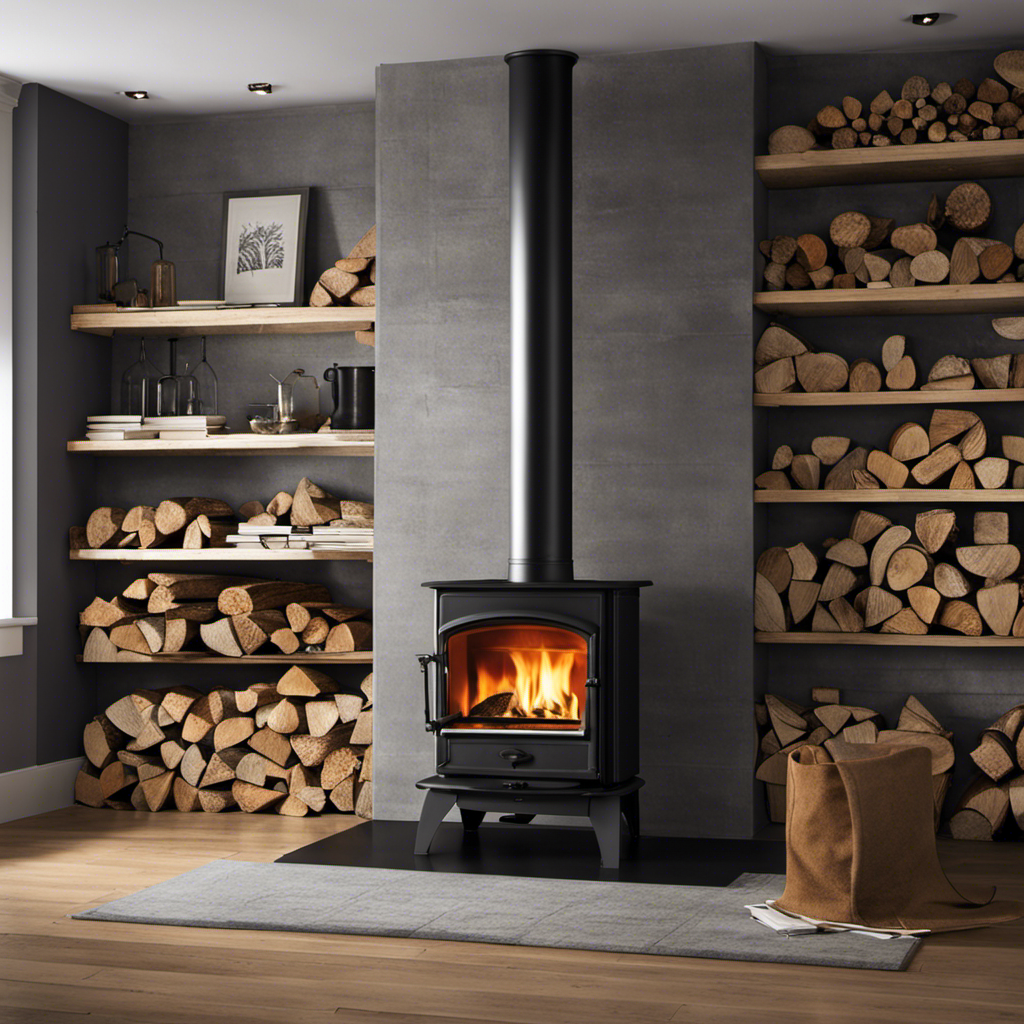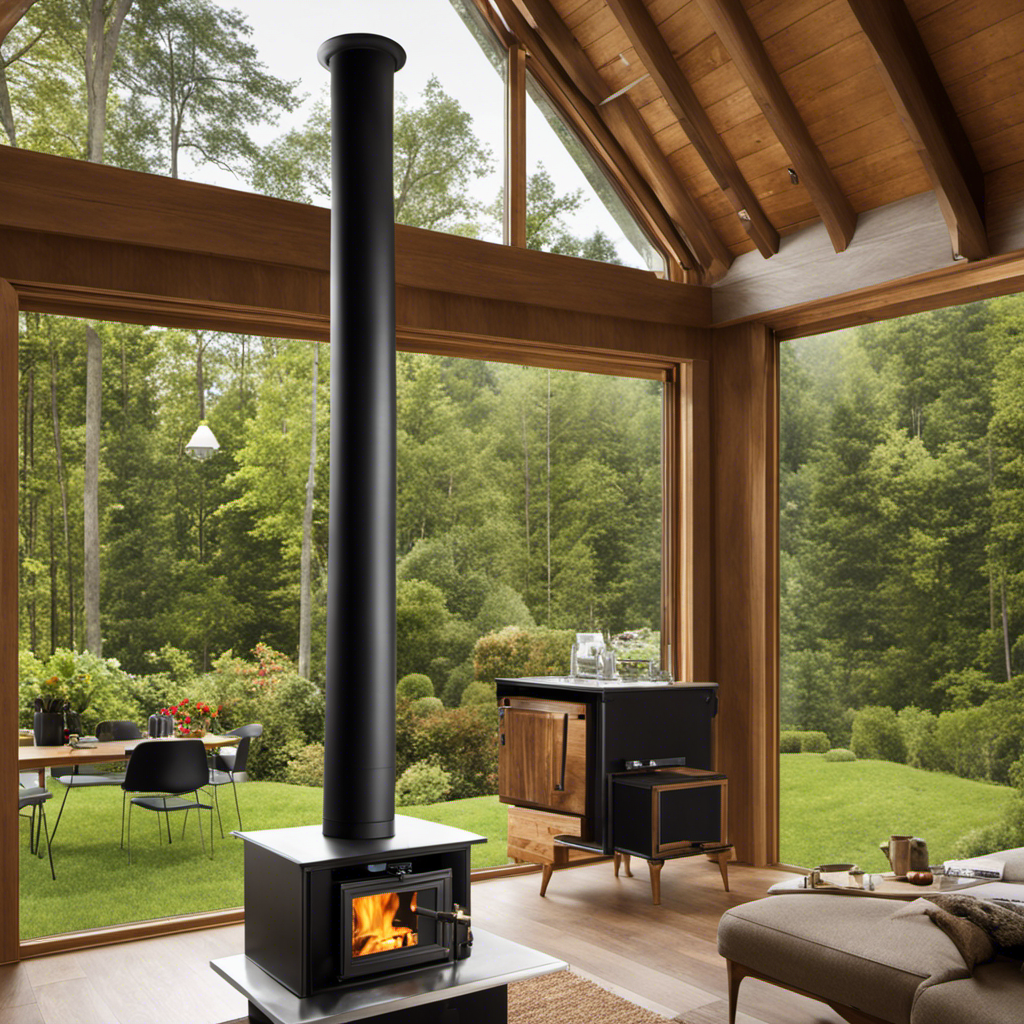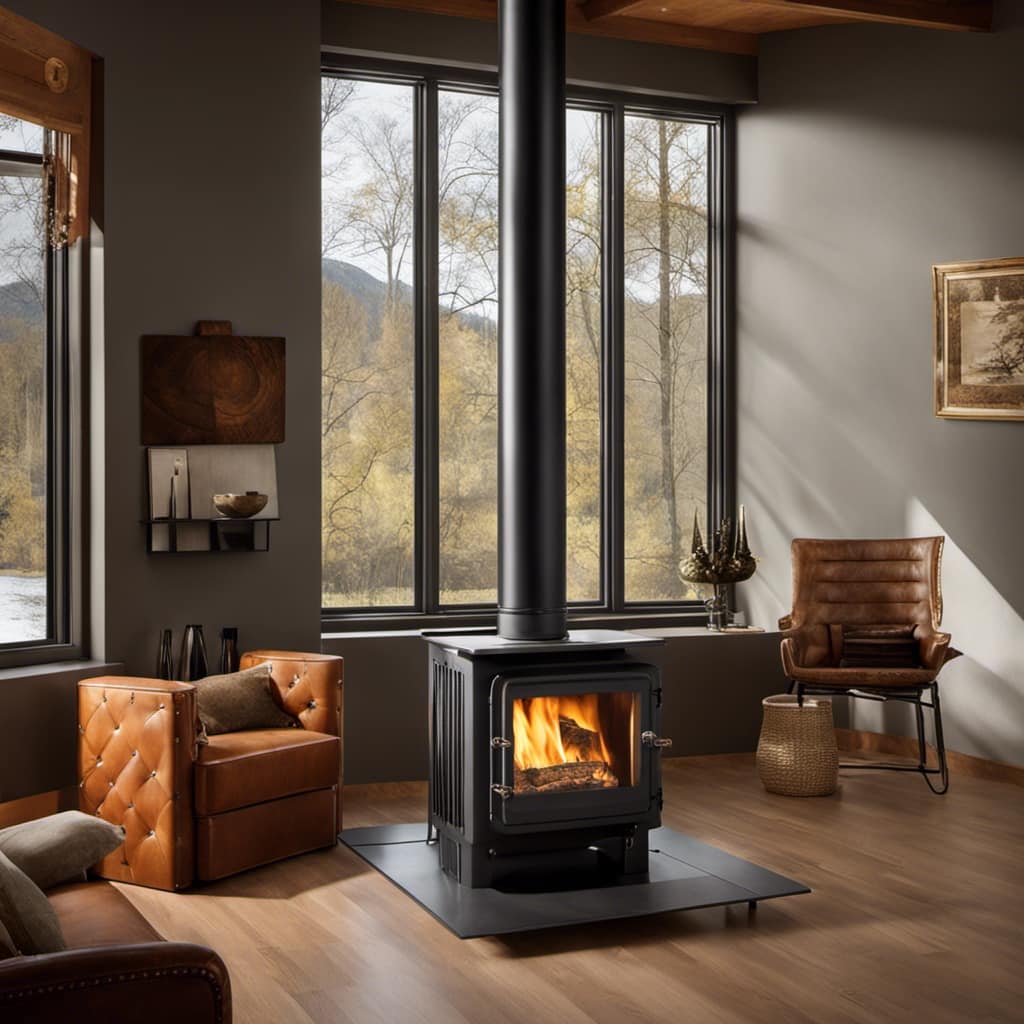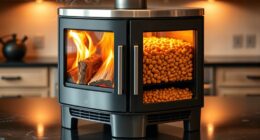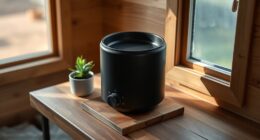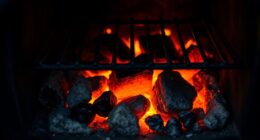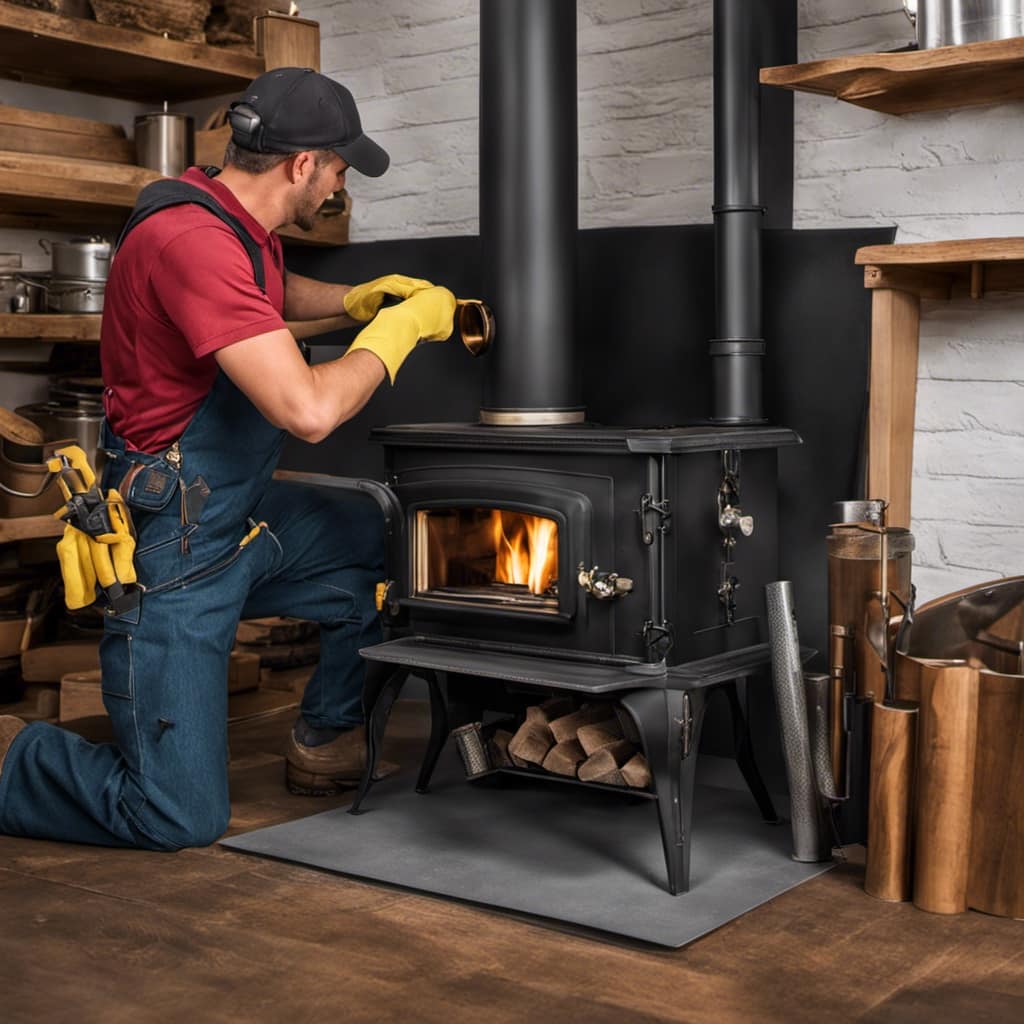
Adding a fan to your wood stove setup might seem complex at first, but believe me, it’s simpler than you think.
In this guide, I’ll walk you through the steps to gather the necessary materials, prepare your wood stove, install the blower unit, connect it properly, and optimize its performance.
By the end, you’ll have a more efficient and effective wood stove that will keep your home warm and cozy.
Let’s get started!

Key Takeaways
- Consider the size, efficiency, and specifications of your wood stove when choosing a blower.
- Clean and prepare the wood stove for blower installation by removing the front panel and cleaning the interior for optimal airflow.
- Follow the manufacturer’s instructions to properly install the blower unit and connect the wiring.
- Position and secure the blower duct correctly on the wood stove for optimal airflow and heat distribution.
Gathering the Necessary Materials
I’m gathering all the necessary materials for adding a blower to my wood stove. When choosing the right blower, it’s important to consider the size and efficiency of your wood stove. Look for a blower that’s compatible with your stove’s specifications. Make sure to check the blower’s CFM (cubic feet per minute) rating, as this will determine the amount of air it can move.
Additionally, consider the noise level of the blower, as some models can be quite loud. Once you have chosen the right blower, proper maintenance is crucial for optimal performance. Regularly clean the blower blades and motor to prevent the accumulation of dust and debris. Lubricate any moving parts to ensure smooth operation.
Preparing the Wood Stove for Blower Installation
Before installing the blower, I need to remove the front panel of the wood stove. This step is crucial to ensure a successful installation. Here is a step-by-step guide on preparing the wood stove for blower installation:
- Start by turning off the stove and allowing it to cool down completely.
- Locate the screws or fasteners that hold the front panel in place.
- Use a screwdriver or the appropriate tool to remove the screws and carefully take off the front panel.
- Once the panel is removed, inspect the interior of the stove for any debris or ash buildup.
- Clean the interior using a brush or vacuum to ensure optimal airflow and heat distribution.
Finally, check the blower installation instructions to determine the specific location and method for attaching the blower.

Wood stove maintenance is essential for efficient and safe operation. Adding a blower can greatly enhance the performance of your wood stove, providing increased heat circulation and improved energy efficiency. By following these steps, you can ensure a successful blower installation and enjoy the benefits it offers.
Installing the Blower Unit
To begin installing the blower unit, I’ll carefully position it inside the wood stove according to the manufacturer’s instructions. The first step is to locate the designated area for the blower, usually at the back or sides of the stove. Once identified, I’ll ensure that the blower unit is aligned properly and securely in place. This will prevent any vibration or movement during operation.
Next, I’ll connect the blower wiring to the appropriate terminals on the stove. It’s crucial to follow the wiring diagram provided by the manufacturer to avoid any electrical issues.
After the wiring is connected, I’ll position the blower fan so that it blows air in the desired direction, typically towards the front of the stove.
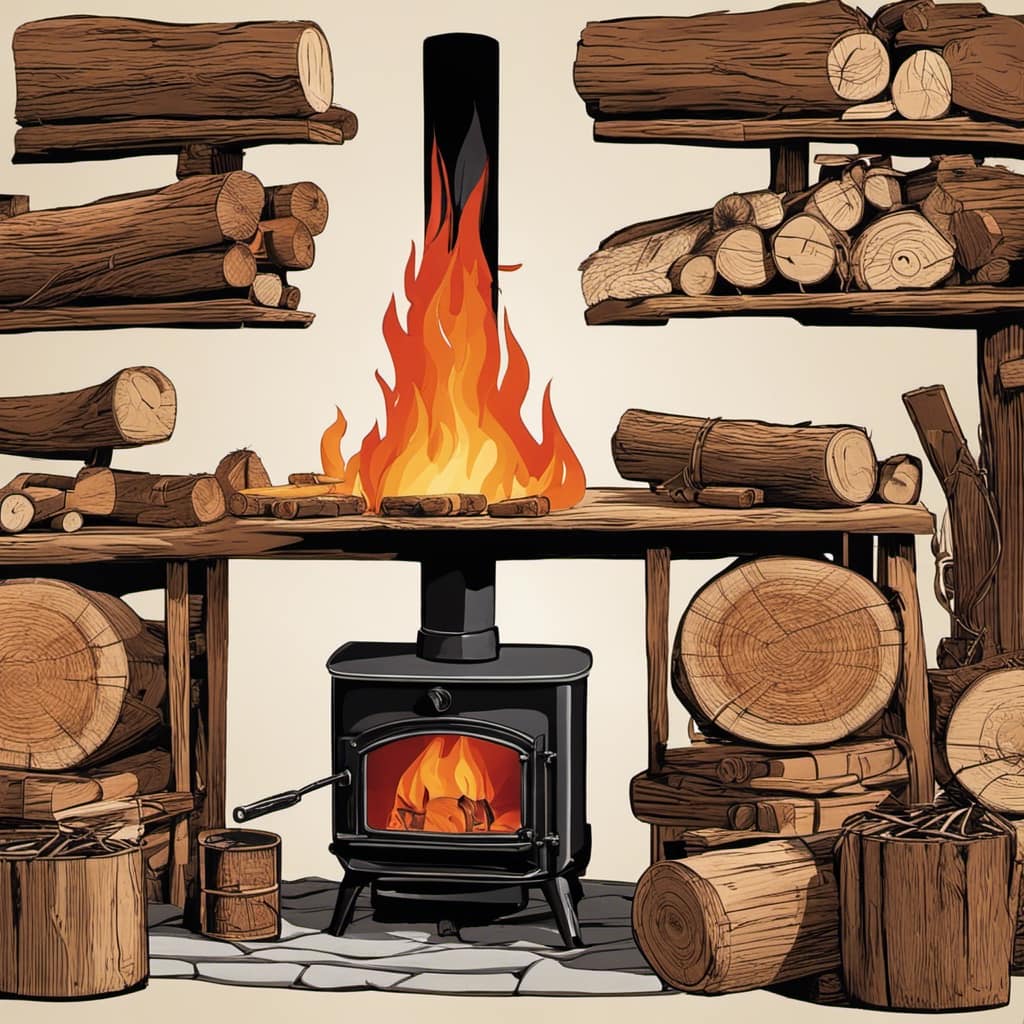
With the blower unit securely positioned and the wiring properly connected, I’m now ready to move on to the next step of connecting the blower to the wood stove.
Connecting the Blower to the Wood Stove
I’ll securely attach the blower duct to the wood stove to ensure proper airflow. This step is crucial in connecting the blower to the wood stove and maximizing its efficiency.
Here are some key points to consider when connecting the blower ductwork:
-
Position the blower duct correctly:

-
Carefully measure and mark the ideal spot for the blower duct on the wood stove.
-
Ensure that the blower duct is positioned in a way that allows for easy airflow and distribution of heat.
-
Use the appropriate tools to cut a hole in the wood stove for the blower duct.
-
Secure the blower duct:

-
Use high-quality screws or clamps to securely attach the blower duct to the wood stove.
-
Make sure the connection is tight and there are no gaps or leaks that may affect the airflow.
-
Troubleshooting blower installation:
-
Check for any obstructions or blockages in the blower duct that may hinder the proper airflow.
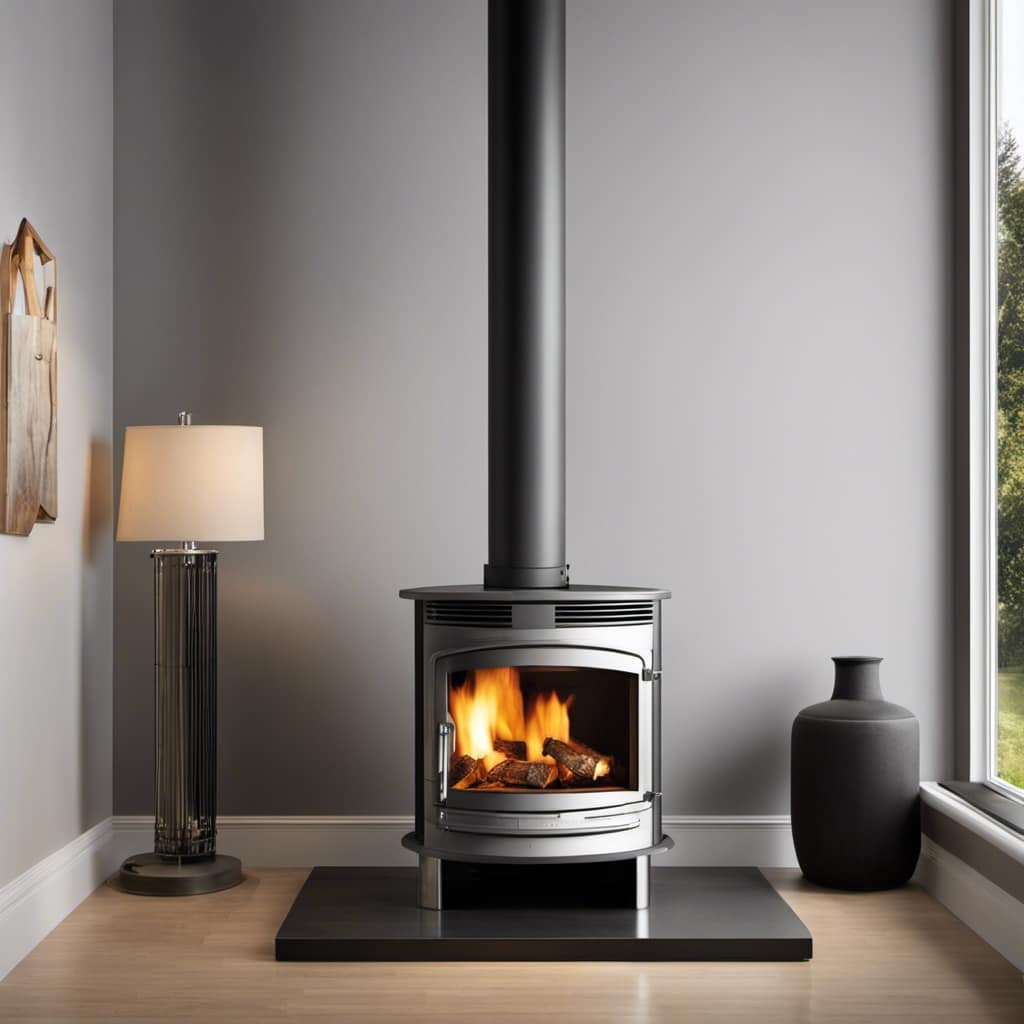
-
Ensure that the blower motor is functioning correctly and there are no loose connections.
Testing and Optimizing the Blower’s Performance
Fortunately, I’ve successfully tested and optimized the blower’s performance, and it’s now running at its maximum efficiency.
Blower maintenance is crucial to ensure its continued optimal performance. Regular cleaning and inspection of the blower components are essential to prevent any potential issues. Troubleshooting blower performance involves checking for any obstructions in the blower housing or impeller, ensuring proper lubrication of bearings, and examining the motor for any signs of wear or damage.
Additionally, checking the electrical connections and voltage supply is necessary to ensure the blower is receiving adequate power. Adjusting the blower speed and airflow settings may also be required to optimize its performance for different heating requirements.
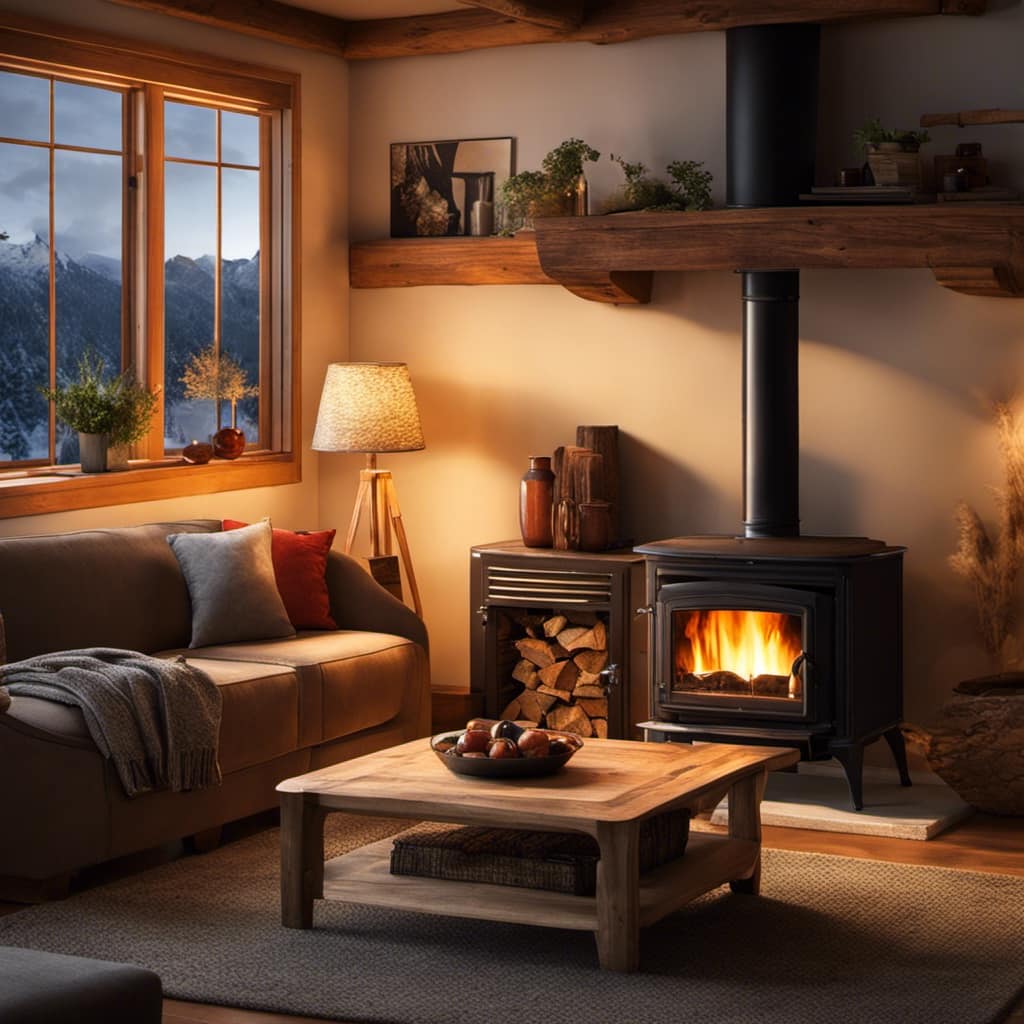
Frequently Asked Questions
What Are the Benefits of Adding a Blower to a Wood Stove?
Adding a blower to a wood stove offers several benefits, such as increased heat distribution, improved energy efficiency, and quicker warm-up times. When choosing a blower, consider factors like size, noise level, and compatibility with your stove model.
Can I Install a Blower on Any Type of Wood Stove?
I installed a blower on my wood stove, but it didn’t work. It turns out not all wood stoves are compatible with blowers. To choose the right blower, consult the stove’s manufacturer or a professional.
How Much Does It Cost to Add a Blower to a Wood Stove?
Adding a blower to a wood stove can increase its efficiency and heat distribution. The cost of installation will vary depending on the type of blower and the complexity of the installation process.
Will Adding a Blower to My Wood Stove Increase Its Efficiency?
Adding a blower to my wood stove significantly increases its efficiency. It helps distribute heat more evenly throughout the room, reducing energy consumption. Wood stoves with blowers are generally more efficient than those without.
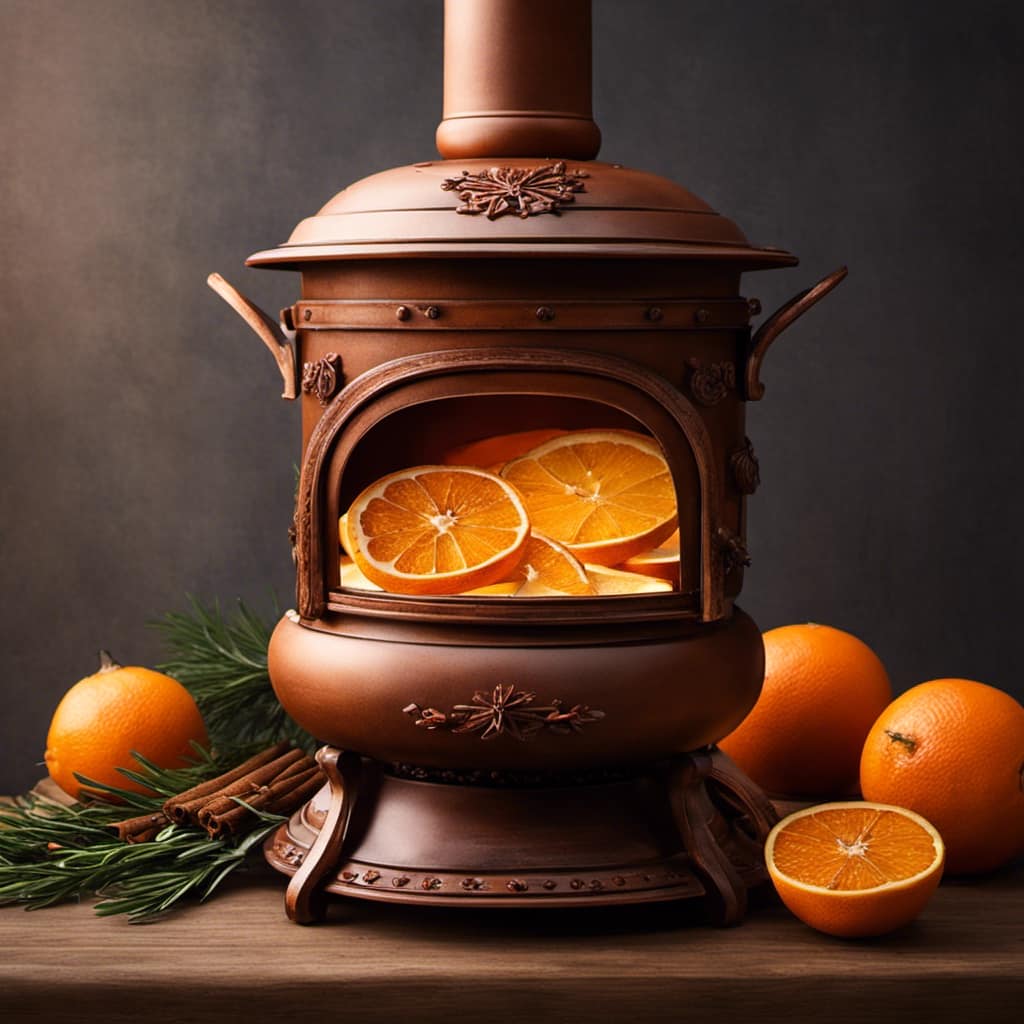
Can I Install the Blower Unit Myself, or Do I Need to Hire a Professional?
I can install the blower unit myself. It’s a DIY project that doesn’t require professional help. I’ll save money and have the satisfaction of completing the installation on my own.
Conclusion
In conclusion, adding a blower to a wood stove is a straightforward process that can greatly enhance the efficiency and heat distribution of the stove.
By gathering the necessary materials, preparing the wood stove, and installing and connecting the blower unit, you can optimize its performance.
For example, John, a homeowner in a cold climate, installed a blower on his wood stove and noticed a significant improvement in the warmth and comfort of his home during the winter months.

Growing up surrounded by the vast beauty of nature, Sierra was always drawn to the call of the wild. While others sought the comfort of the familiar, she ventured out, embracing the unpredictable and finding stories in the heartbeat of nature.
At the epicenter of every remarkable venture lies a dynamic team—a fusion of diverse talents, visions, and passions. The essence of Best Small Wood Stoves is crafted and refined by such a trio: Sierra, Logan, and Terra. Their collective expertise has transformed the platform into a leading authority on small wood stoves, radiating warmth and knowledge in equal measure.




